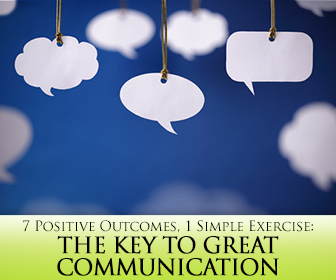It’s intimidating. It’s challenging. It’s difficult. Sometimes it seems impossible. What is it? Speaking in a second language.
Unless you are a gifted language learner, mustering the courage to speak up in a language you are just learning is tough. ESL teachers are there to help their students grow and learn and eventually become fluent in English, which includes effective oral communication. Teachers give their students experiences that build a foundation of confidence and communication skills. Getting your students communicating effectively doesn’t have to be very complicated, either. This simple classroom exercise developed by Yoda Schmidt can open the door to many positive communication experiences between your students, and it doesn’t take much preparation on your part.

The Key to Great Communication Between Your Students
-
1
Huddle Up
Start by putting your students into groups of four. Give each person a short (level appropriate) article to read. Two students get one article, two a second article. Give your students time to read the articles. Their goal is to remember as much detail from the article as possible. This can be especially challenging as they may not take notes as they read. Then, after about ten minutes, take the articles from your students. In pseudo jigsaw style, the two students who read the first article give its information in detail to the students who read article number two. Then the pair that read article number two explain their article to the first pair.
-
2
Shift
Once everyone has had a chance to explain their articles, shift pairs. The first pair from each group of four shifts to the second pair from the next group. Then have each pair administer a 20 question comprehension quiz on the article that they read. The first pair should administer the quiz on the first article to the second pair and vice versa. Most likely, students will not score very highly on the quiz, but this is actually a good thing. It leads to our first positive outcome.
- Students realize that they are not communicating effectively.
Though unpleasant, this step is important if your students are to move to a deeper and more effective level of communication.
-
3
Repeat
Motivated students won’t stop there. Although their first performance may have been poor, they will be eager to try the exercise again. Another day, have students repeat the exercise with two new articles. Again, the first pair reads one article, the second pair another. After ten minutes, each pair takes the opportunity to explain their article to the other pair. This time, though, when pair one explains their article to pair two, the listening pair will listen better. Without any prompting from you, you will see that,
- Listeners will ask clarifying questions.
- Listeners will speak up when they do not understand something.
- Listeners will make sure they heard correctly.
This type of listening is known as active listening. In the first time through the exercise, listeners will simply accept what speakers give them. They will merely receive information. They will be passive listeners. When students are listening actively, however, they will play a role in getting the information the speaker is giving. They recognize when they do not completely understand, and they make efforts to get the information they need.
Your listeners won’t be the only ones who change, however. In addition, speakers will become more careful communicators. They will work with their listeners to increase their comprehension.
- Speakers will make sure they were understood.
- Speakers will define unfamiliar words for listeners.
- Speakers will point out the key points in the article and will encourage their listeners to remember that information.
As their listeners work harder to understand, speakers work harder to be understood. These changes will happen instinctually. You can help by instructing your students how to communicate more successfully, but most likely they will happen whether you try to bring them about or not.
-
4
Why it Matters
These speaking and listening strategies are important for real world communication. When your students find themselves outside the classroom, active listeners and intentional communicators will have more success understanding and being understood by native speakers. For this reason, a simple exercise such as this one can make a great difference in your students’ post ESL program communication abilities.
If you haven’t used this type of activity in the classroom before, don’t feel overwhelmed by the amount of preparation.
You can find articles at every reading level with comprehension questions on many websites. You can start with these articles from English for Everyone as you build your own classroom library of articles and comprehension questions. The more practice you give your students with active communication, the more it will benefit them in the long run.
How do you encourage students to be more active communicators?
P.S. If you enjoyed this article, please help spread it by clicking one of those sharing buttons below. And if you are interested in more, you should follow our Facebook page where we share more about creative, non-boring ways to teach English.







